What Can Weeds Tell Us About Our Soil?
Observe the weeds in your yard for clues about the fertility, moisture levels, and pH of your soil.
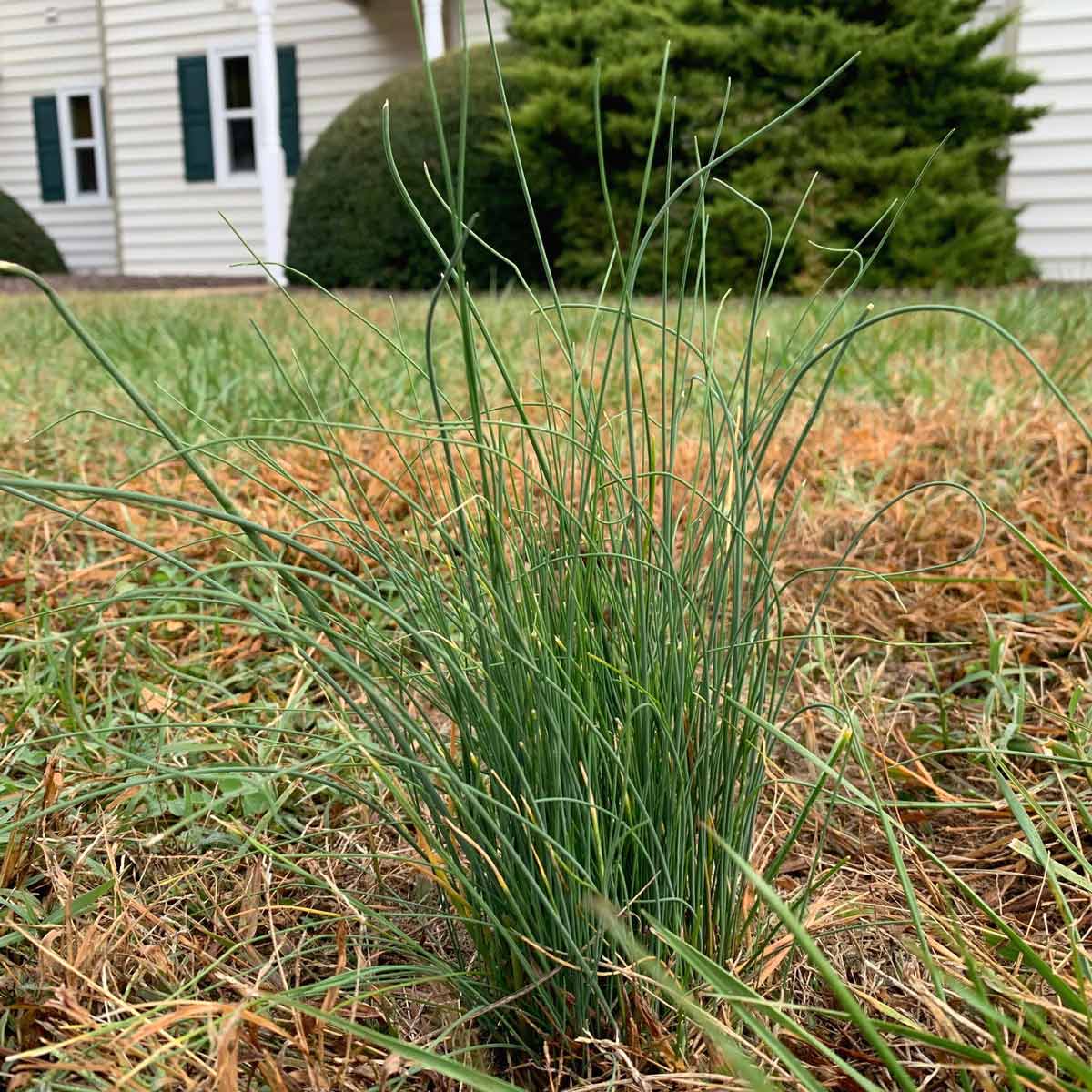
Wild garlic is a common lawn weed that pokes up above the turfgrass in early spring. George Weigel
Early-spring lawns throughout the eastern U.S. often sport clumps of narrow-bladed plants that look – and smell – a lot like onions.
That’s because these clumps really are either wild onions or wild garlic – close cousins to the onions and garlic we grow in cultivated vegetable gardens.
All are members of the Allium family and share the trait of growing from underground bulbs, primarily in the cool seasons of fall and spring, and in the South, winter.
Although wild onions and wild garlic may not be quite as flavorful or as big-bulbed as onion-family plants bred for veggie-garden use, they are edible. So this is one weed you can pull and eat if you don’t want it growing in the yard.
If you’re going to eat wild onions or wild garlic, though, just be sure
Besides lawns, wild onions and wild garlic can be found in garden beds, farm fields, and other sunny, well drained locations. They prefer rich soil but are adaptable enough to grow in a wide range of conditions.
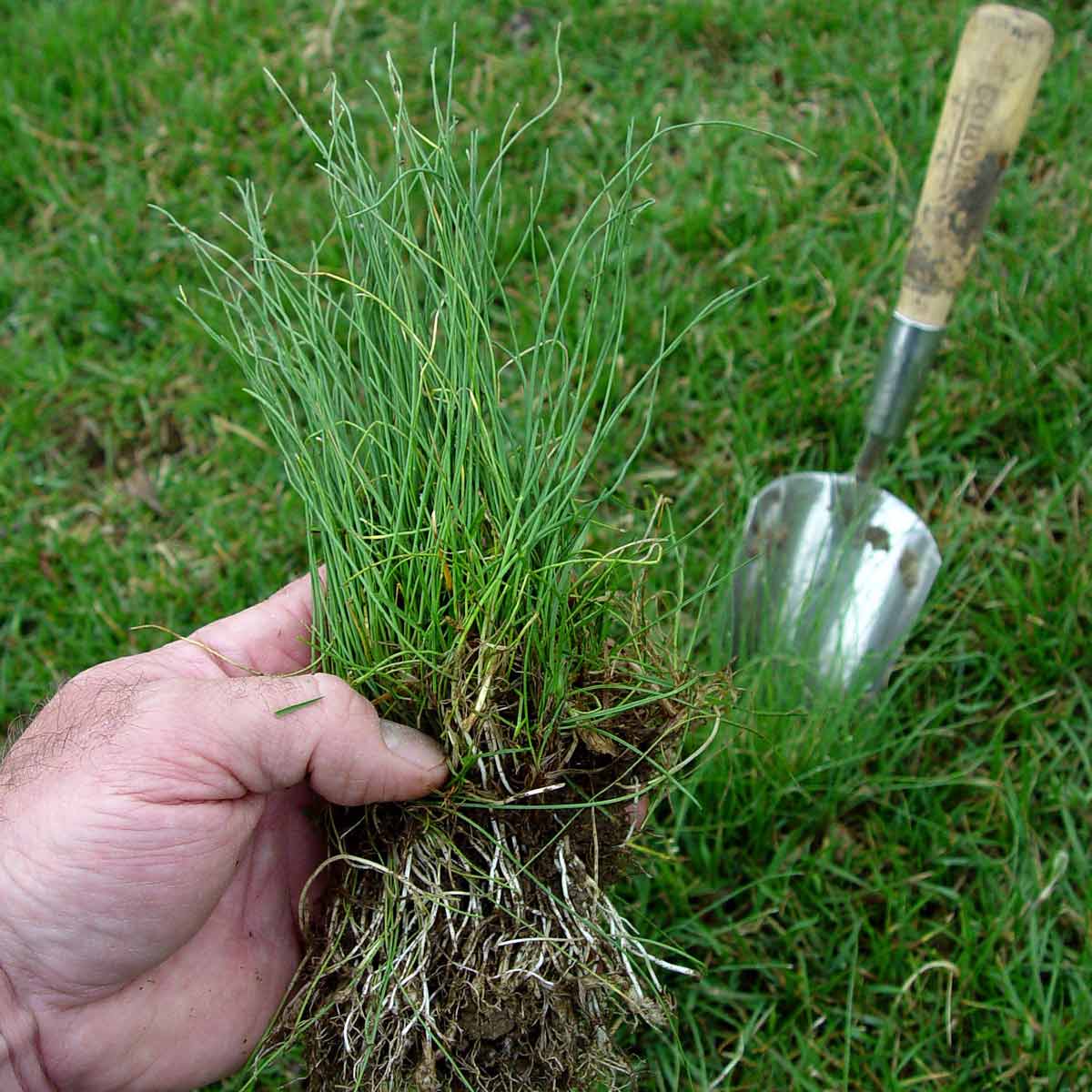
Wild garlic grows in clumps from small bulblets. George Weigel
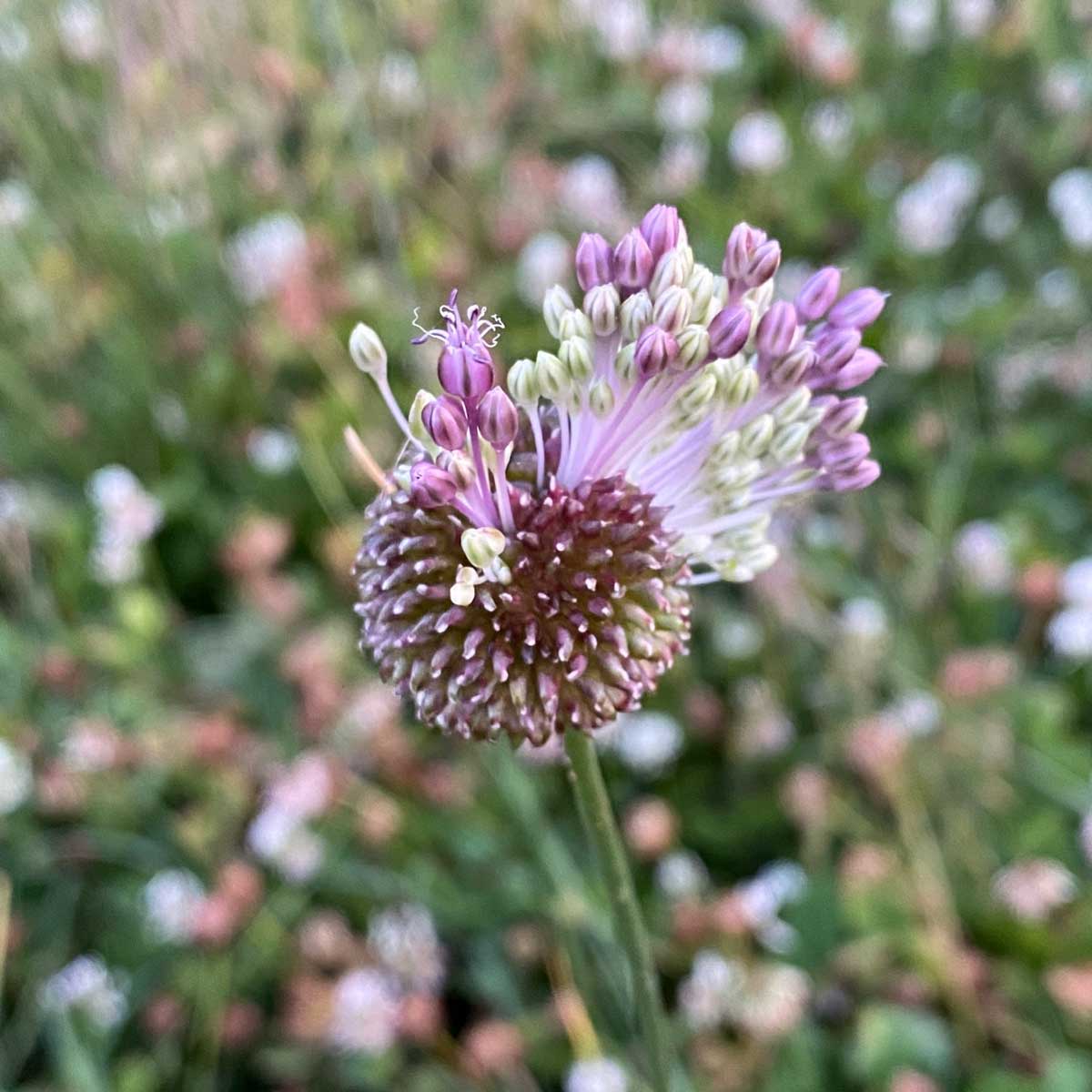
Wild garlic flowers and bulblets
Wild onions and wild garlic are similar in that they’re both perennial plants, they both grow in clumps of wiry foliage about 10 to 18 inches tall, and they both peak in spring before going dormant and dying back in the heat of early summer.
They also both have a distinctive oniony odor when the leaves are crushed.
To tell the difference, look closely at the leaves. Wild garlic (Allium vineale) has leaves that are smooth, round, and hollow inside. Wild onion (Allium canadense) has leaves that are flat and solid (i.e. not hollow inside).
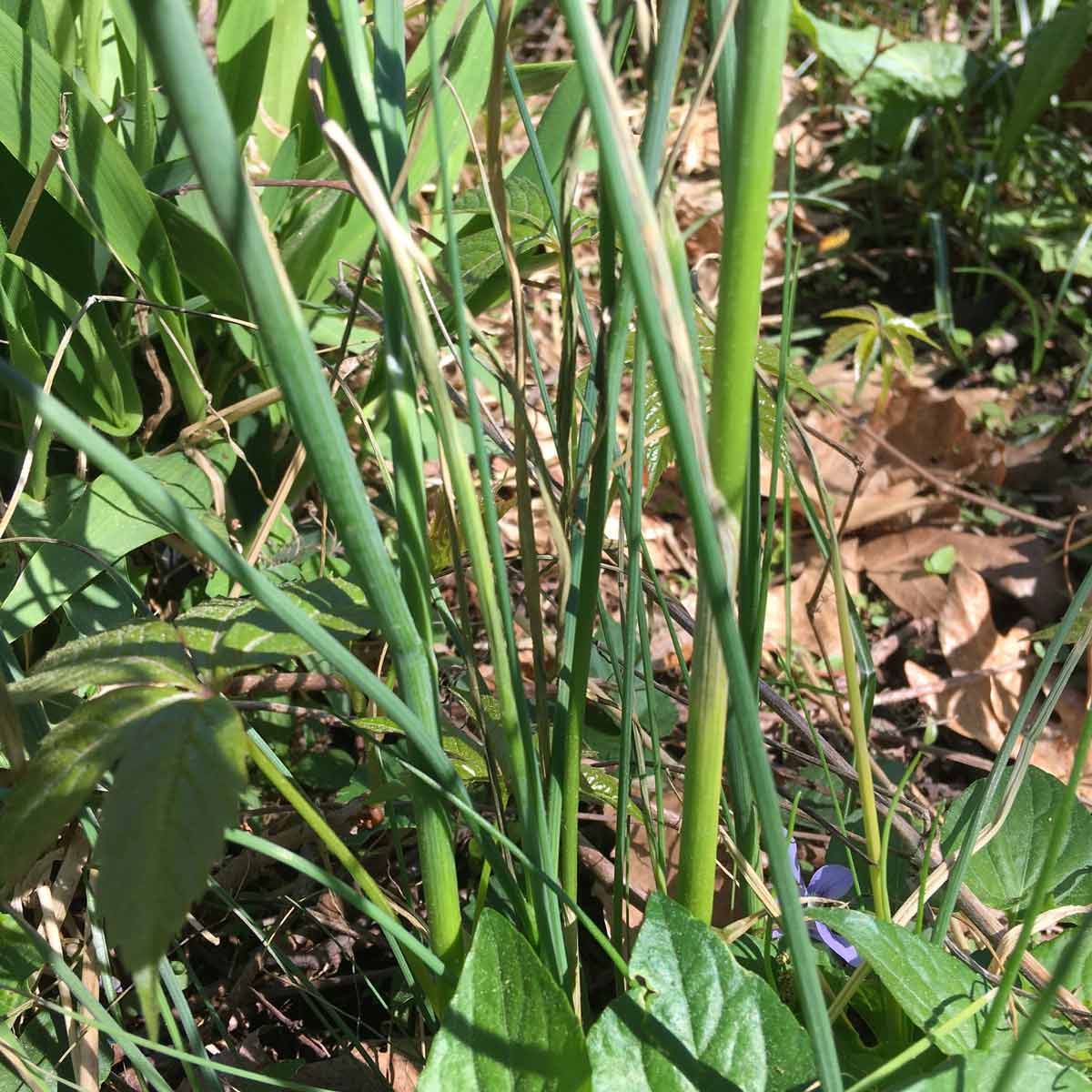
Wild onion leaves
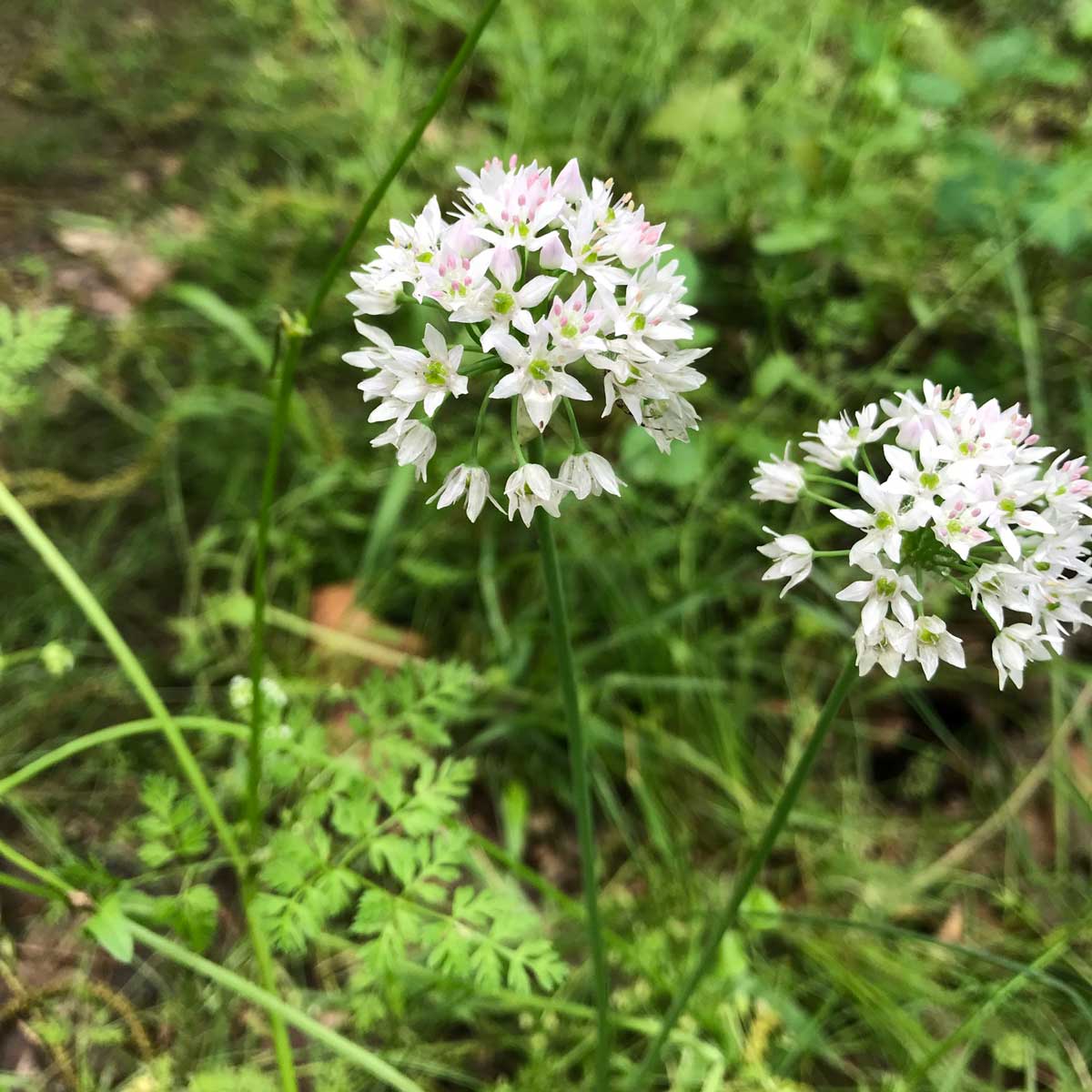
Wild onion flowers
When not short-circuited by repeated mowing, wild garlic produces small, umbrella-like, pinkish-purple flowers and/or clusters of bulblets at the top of flowering stems. Wild onions may produce flowers but not bulblets at the stem tips.
The “aerial bulblets” of wild garlic can drop or be moved by wildlife or people to spread into new areas, but the main mode of spread for both wild onions and wild garlic is producing new underground bulblets from the perimeter of existing clumps.

Wild garlic often pokes up among openings in sunny landscape beds, such as through these spreading junipers. George Weigel
Because wild onions and wild garlic go dormant in summer, this is a weed that’s easier to ignore than weeds that get bigger and more invasive as the season progresses.
As clump-formers that aren’t rampant seeders, wild onions and wild garlic also aren’t as equipped to take over a yard as fast as super-fast growers such as mile-a-minute weed and kudzu or prolific seeders such as dandelions and pigweed.
Smaller outbreaks of wild onions and wild garlic are best stopped by digging them out. It’s important, though, to loosen the clumps first with a long, sharp weeding tool (even a screwdriver will do) so you can remove the entire bulb cluster.
If you leave broken-off bulblets behind or merely rip off the foliage, new shoots will regrow.
In the lawn, regular mowing helps disguise the foliage until it dies back. Repeated mowing also prevents plants from producing stem-tip bulblets and seeds.
For wider outbreaks in the lawn, apply Preen Lawn Weed Control. This granular product doesn’t contain fertilizer. Its only mission is to kill 200 broadleaf weeds, including wild onion and wild garlic. It can be applied any time broadleaf weeds are actively growing without risk of burning grass with excess fertilizer.
For best results, apply Preen Lawn Weed Control after a rain or first thing in the morning when dew is on the grass. That helps the granules stick to the grass blades, increasing the product’s effectiveness. Time the application when rain is not in the forecast at least 48 hours, and be sure not to water it in or irrigate the lawn once applied as this will wash the granules from the weed leaves.
Be patient – as granular lawn weed killer does not have an immediate effect. Within two weeks, the lawn weeds should begin wilting and dying.
Preen Lawn Weed Control can be used on all lawns except carpetgrass, dichondra, St. Augustinegrass, or established turf containing desirable clovers. See the Use Directions on the product label for complete list of weeds and application instruction.
Clumps can also be spot-sprayed with a broad-leaf weed-killer labeled for lawn use. Check the label to be sure wild onions and wild garlic are on the control list, and follow all directions on timing and application.
Warm-season grasses that are predominant in the South are best sprayed in the fall since they’re more susceptible themselves to broad-leaf lawn herbicides when first resuming growth after winter.
Broad-leaf lawn herbicides in cool-season lawns are most effective immediately after wild garlic and wild onion have been mowed.
In garden beds, non-selective herbicides are usually effective in killing wild garlic and wild onions, roots and all.
In all cases, repeated applications over two or three years might be needed to completely kill all clumps.
Unfortunately, wild garlic and wild onions are weeds that can’t be prevented with pre-emergent weed preventers such as Preen.
The best garlic/onion defense in a lawn is to encourage thick grass by regular fertilizing and overseeding the lawn with additional grass seed in fall.
In garden beds, a two- to three-inch layer of mulch can help prevent the sprouting of wild garlic and wild onions as well as most other weeds.